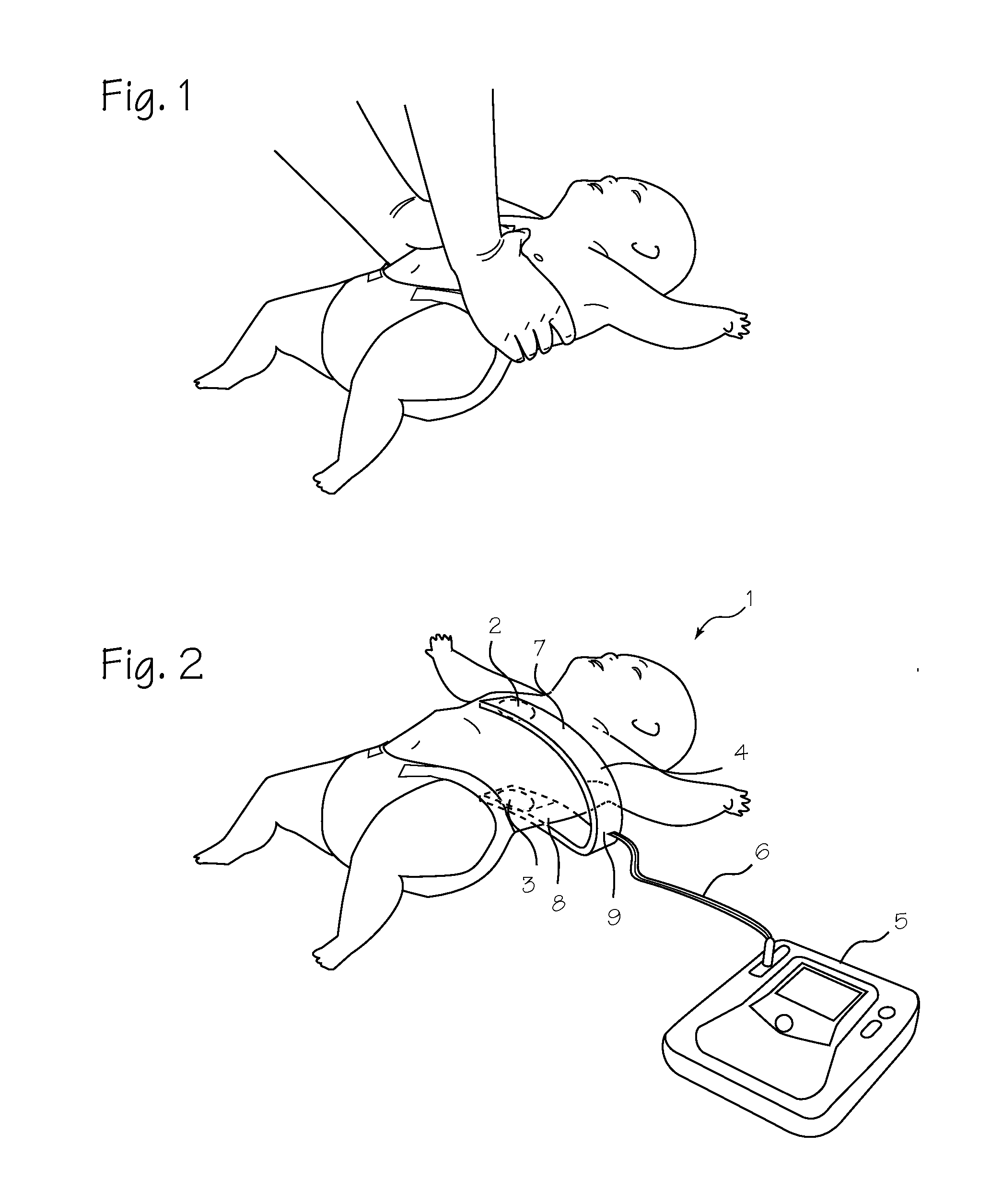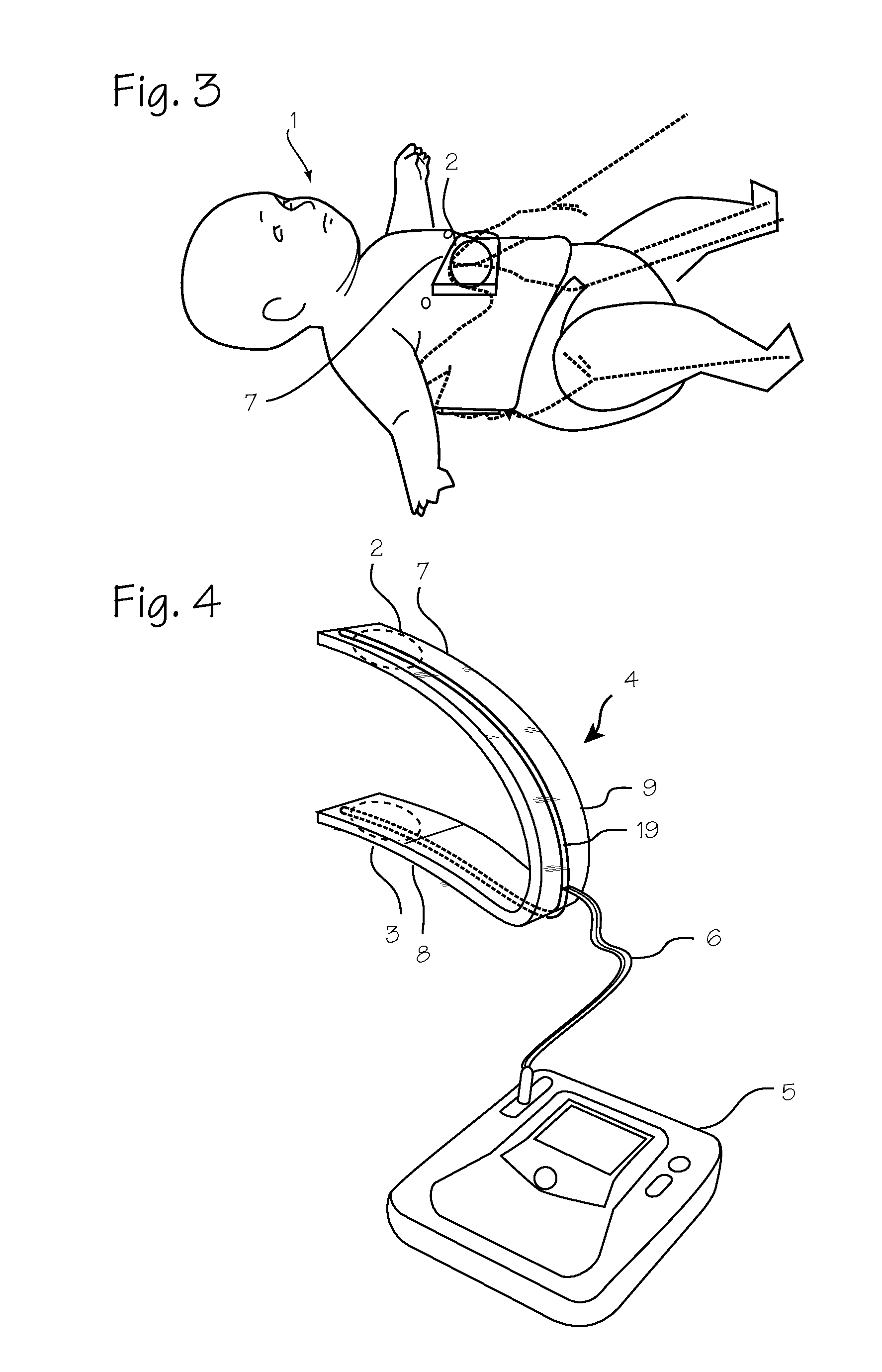CPR Chest Compression Monitor for Infants
- Summary
- Abstract
- Description
- Claims
- Application Information
AI Technical Summary
Benefits of technology
Problems solved by technology
Method used
Image
Examples
Embodiment Construction
[0015]FIG. 1 illustrates the two-thumb technique for accomplishing CPR compressions on an infant. The infant is shown supine, supported on a surface. A CPR provider has placed his hands around the infant's thorax, placing his thumbs over the infant's sternum with his fingers wrapping over the axillary area under the infant's arms and around the infant's back. In this method, the CPR provider squeezes the infant's thorax, with the thumbs pressing on the sternum, to push the sternum toward the spine. These compression should be accomplished at a rate of 100 compressions per minute and a depth of 1.5 inches (3.8 cm)(or about one-third of the total thickness of the thorax).
[0016]FIG. 2 illustrates placement of the new chest compression depth monitoring system on an infant cardiac arrest victim 1. The system includes a first sensor 2 located over the sternum and a second sensor 3 located on the back. These two sensors are mounted on a frame 4, which, as illustrated, is a U-shaped frame d...
PUM
 Login to view more
Login to view more Abstract
Description
Claims
Application Information
 Login to view more
Login to view more - R&D Engineer
- R&D Manager
- IP Professional
- Industry Leading Data Capabilities
- Powerful AI technology
- Patent DNA Extraction
Browse by: Latest US Patents, China's latest patents, Technical Efficacy Thesaurus, Application Domain, Technology Topic.
© 2024 PatSnap. All rights reserved.Legal|Privacy policy|Modern Slavery Act Transparency Statement|Sitemap



